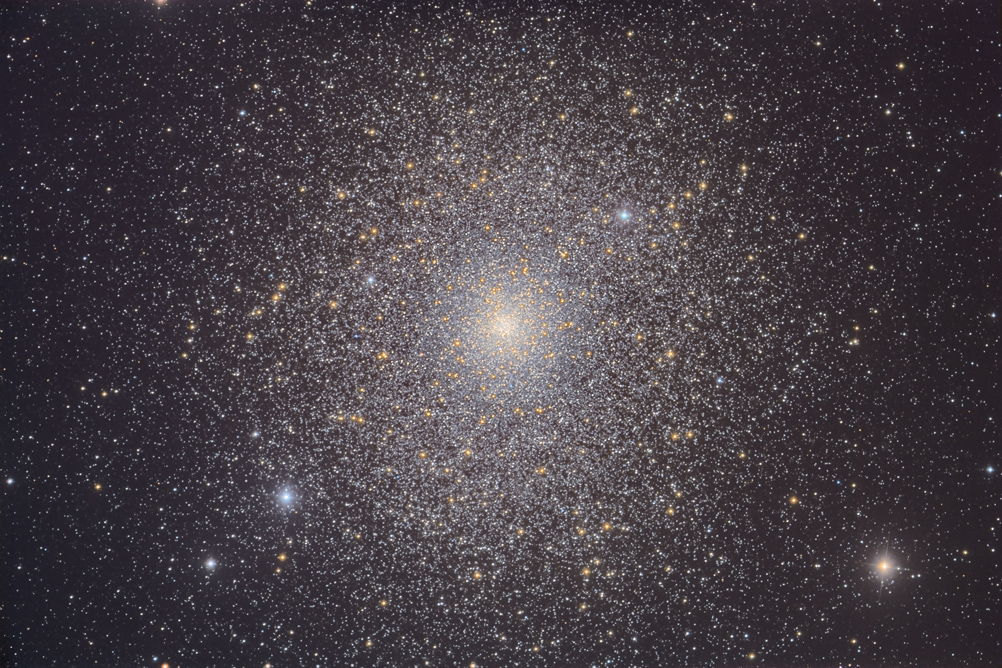

47 Tucanae: This is the second largest and second brightest globular cluster that can be seen from Earth (the brightest is Omega Centauri).
A globular cluster is a group of ancient stars (they are thought to be almost as old as the universe, perhaps 13 billion years old), gravitationally bound to each other, orbiting the core of its associated galaxy.
47 Tucanae is about 13,400 light years from Earth. and appears to be almost the same size as a full moon when viewed from very dark skies; it is roughly 120 light years across. It contains several million
stars. (To put that in a bit of perspective, that's several million stars in a sphere of radius 60 light years; the nearest star to our sun is over 4 light years away; if our little region of our galaxy
had the same density of stars as 47 Tucanae, there would be perhaps 1000 or more stars in the region around our sun in which there actually are no other stars, and we would never see natural darkness).
Being very old, and largely devoid of star-forming gas, the cluster is visually dominated by red giant stars (stars very late in their lifetime; the bright amber-colored stars in the image),
while most of the stars in the cluster are a yellow/white color (the virtually colorless dimmer stars in the image), similar to our sun. When seen through a large telescope in dark skies,
This beautiful cluster apparently is visibly pale yellow in color. A number of blue giants are hiding near the nucleus;
scientists theorize that these blue stars have formed either from the collision of the old stars or the slow merger of double-stars (in either case, rejuvenating the star,
causing it to glow in a blue color). This happens in significant part because of the high density of stars in the central part of 47 Tucanae;
star collisions are very rare in interstellar space, since the density of stars outside of globular clusters is so low.
It shines at magnitude 4.9, and is visible to the naked eye in dark skies. It has a mass of over one million times that of our sun.
Copyright 2014, 2015 Mark de Regt